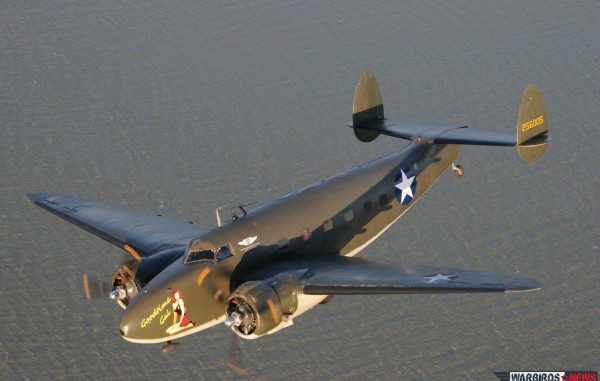
Recently, noted aviation photographer and journalist, Luigino Caliaro had the opportunity to photograph the Commemorative Air Force (CAF) Houston Wing‘s beautifully restored Lockheed C-60A Lodestar
With the growth of the commercial aviation industries in the mid-30s, a competition developed to capture the lucrative and growing passenger-carrying market. Among the companies producing for this market segment was Lockheed, who produced some interesting planes for this purpose. The Lockheed Model 14 Super Electra, and the Model 18 Lodestar, of which the military-spec C-60 is a variant, proved to be extremely capable planes with among the best cruising speeds, ranges and altitude performance, besting that of its rival, the Douglas DC-3.
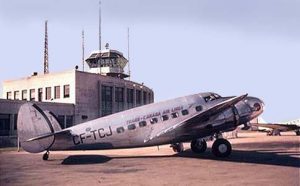
The Super Electra’s superior performance made it the passenger plane to have for challenging routes such as those that surmounted the Rockies, and as such it was widely used in the Canadian passenger market, notably by Trans Canada Airlines; but then as now, airlines are ruled by cost per seat-mile, and while the the Super Electra was indisputably a better aircraft, the 22-passenger DC-3 bested it in economy, so as is not surprising, most airlines went for the more economical model. The Model 18 Lodestar was an attempt by Lockheed to address the cost per passenger mile and was a 5 foot, six inch stretch of the Super Electra’s airframe which added four seats bringing the Lodestar’s carrying capacity to 18 passengers, and bringing operating costs in line with the DC-3, without sacrificing the superior performance characteristics of the plane.
Most of the American carriers were already under contract to purchase DC-3s when the Lodestar began selling, and as such it suffered limited sales within the United States, only 31 planes, though it did sell internationally, with 29 bought by the government of the Netherlands East Indies, 21 to South African Airways, 13 to New Zealand National Airways, 12 to Trans-Canada Air Lines and 9 sold to the British Overseas Airways Corporation (BOAC).
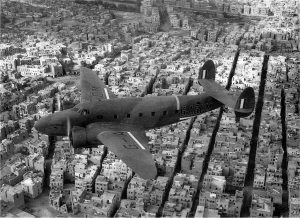
overflies Cairo in 1942.
(Image Credit: USAAF)
The outbreak of World War II saw many civilian Lodestars pressed into military service, used as fast personnel and light transport planes, and depending upon the engines and interior configuration these transports were given C-56, C-57, C-59 and C-60 designations. Later models built expressly for military service were designated by the US Army Air Force as the C-60A and US Navy as the R5O. Lodestars were also extensively used for parachute training, and for towing the big Waco CG-4 gliders, and many C-60s were based at South Plain Army Airfield in Lubbock, Texas, the largest glider training base in the United States. A total of 625 Lodestars of all variants were built, and 325 of them were of the C-60A, the military version built in major numbers.
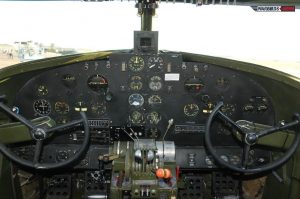
(Image Credit: Luigino Caliaro)
There were quite a number of warplanes based on the Clarence “Kelly” Johnson-designed Lockheed Electra and the later Model 18 Lodestar, with the Electra being the base on which the Lockheed Hudson was built and the Lodestar serving as the basis for the Lockheed Ventura/B-34 Lexington, the PV-1 Ventura, and the PV-2 Harpoon planes that proved to be quite successful during the war and quite popular on the civilian market after the war’s end.
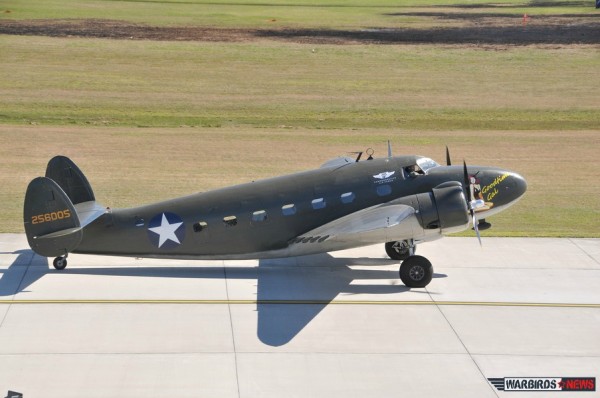
(Image Credit: Luigino Caliaro)
After the war, many of the aircraft were sold into private hands, with large numbers ending up in South America serving with small airlines. The CAF’s Houston Wing operates one of the few remaining airworthy C-60s in military configuration, and regularly displays it at major air shows. The plane was built by Lockheed’s factory in Burbank, California in 1943 and assigned to USAAF with the serial 42-56005 for and was primarily used for domestic transport during the war. After the war, the plane was sold to the civilian market on January 6, 1945 when it was purchased by Skyways International Trading and Transport, which used it as a cargo plane with the civilian registration of NC45330. Subsequentely the plane was sold to Nicaragua and modified to carry passengers by the national airline Lanica (Lineas Aereas de Nicaragua) with the local registration AN-ADI. In the early ’50s the plane returned in the United States, to perform as an executive transport. It performed this task with a number of different corporations, including General Dynamics and US Steel. The plane was used also by several minor airlines and corporate companies before being employed in the early ’70s, as Atmospheric and Weather research plane.
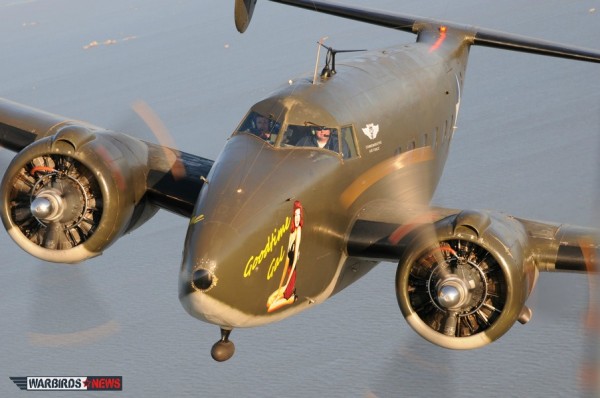
As often happens to older planes with decreasing commercial value, the Lodestar changed hands several times in the 80s and 90s, and it was converted into a parachute plane in 1992 up in Alaska. The plane was acquired in 2002 by the Commemorative Air Force and was ferried to the CAF Houston Wing’s West Houston Airport. The plane was found to be in remarkably good condition with not a great deal of work needed to make it an airworthy warbird once again, mainly verifying all systems were operable and repairing some corrosion on the wings. The restoration effort went on a six year hiatus from 2004-2010 due to higher priority work at the wing, but was restarted in April, and 15 months later the plane was making fast taxi runs, and took to the skies again in August 2011. The plane, “Goodtime Gal” is now finished in period-correct USAAF livery and is equipped like so many Lodestars were, as a paratrooper plane complete with jump lights and a static line hookup, and under the stewardship of the CAF we’re sure that this 70 year old plane will be flying for generations to come.
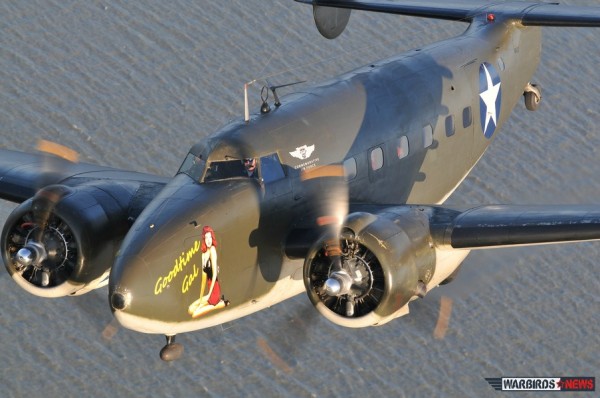



attended fly in at west houston. interested in helping your group
Bob- you have to contact the CAF directly.